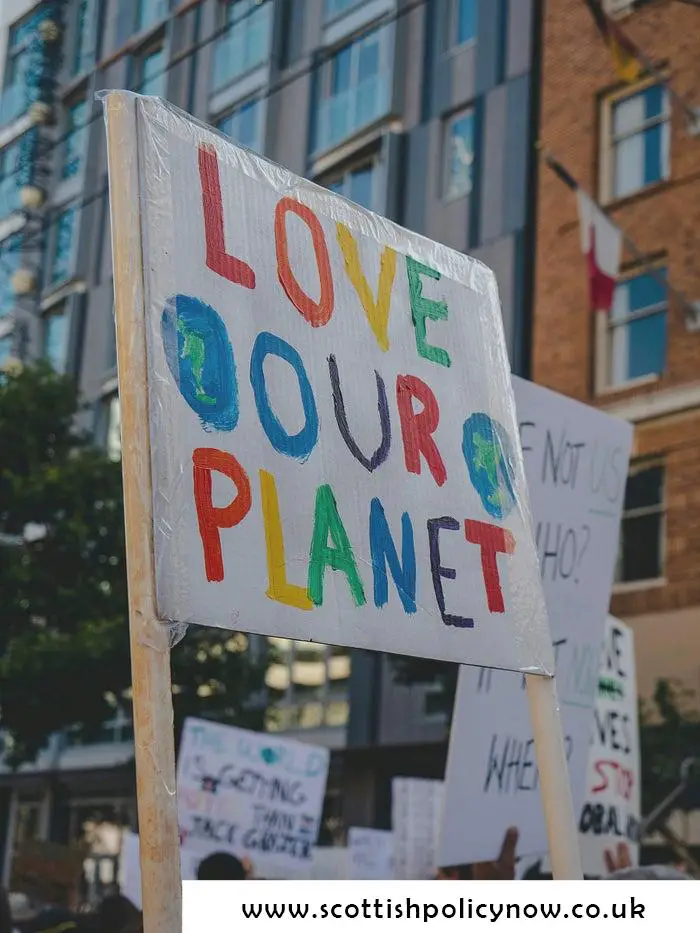I remember the first time I found myself standing on the edge of a peaceful protest. On that day, armed with nothing but a handmade sign clumsily crafted from a recycled cardboard box (the ink still smudging against my fingers), I felt a mix of exhilaration and nerves. The sign, proclaiming “Our Planet, Our Future,” might not win any awards for originality, but it was mine, a physical manifestation of my concerns and hopes for the planet.
I was no stranger to expressing my thoughts online, having long written tales of local activism and environmental stewardship from the comfort of my home. The leap from digital activism to standing shoulder-to-shoulder with fellow advocates on the streets was a big one for me though. And there I finally was, sneakers laced up, ready to take those literal and metaphorical steps.
The crowd was a diverse mix of faces, young and old. I was struck by their creativity on display — witty slogans, vibrant artwork, and even a troupe of musicians turning our collective concerns into a soundtrack for change.

Humor, it turned out, was a vital component of the day. Between the chants and the marching, laughter bubbled up, lightening the mood and knitting us closer together. One memorable sign read, “This is the only kind of ice I want to see melting,” accompanied by a drawing of an ice cream cone. The message was serious, but the delivery was infused with a warmth and lightheartedness that made the gravity of our cause more approachable.
As we marched, I found myself reflecting on the power of collective action. Here I was, a self-professed homebody, more comfortable navigating the realms of social media than crowded spaces, yet feeling an undeniable sense of belonging.
The march was a learning experience. I listened to passionate speakers, engaged in conversations that challenged my understanding, and observed the peaceful yet powerful ways in which we could demand attention and action from those in power. It was a practical lesson in democracy, and a reminder that beyond the screen, there lies a world ripe for positive change, if only we have the courage to step out and claim it.
Protests are powerful dialogues with society and its leaders. They serve as a mirror, reflecting the concerns, hopes, and demands of the public back to those in positions of power.
In the days and weeks following the march, I watched with a keen eye as the impact of our collective voices began to unfold. It wasn’t immediate, and it wasn’t always direct, but the changes were there if you went looking for them. Local media outlets, for example, which had previously skirted around the edges of our environmental concerns, began to highlight the urgency of the issues we’d marched for. That meant the amplification of our message, carrying it into homes and spaces that our march could not physically reach.
A council member, who had attended the protest, also reached out for dialogues with activists to better understand the depth of our concerns. This was a small but significant victory. It was an acknowledgment that our voices had been heard, and it opened a channel for ongoing communication and collaboration between the community and its elected officials.
Change, I understand, often starts with a conversation, with the brave act of standing up and speaking out. Protests serve as catalysts for these conversations, bringing issues to the forefront of public discourse and, ultimately, to the attention of those with the power to make legislative changes.
The power of peaceful protest, then, lies in its ability to unite voices, to transform individual voices into a chorus too loud to ignore. And it creates a space where citizens can engage directly with the mechanisms of democracy, pushing for the adoption of policies that reflect the collective will and welfare of the people.
As the day waned and the crowds began to disperse, I felt a mix of fatigue and invigoration. My feet ached — which tells you how many miles were covered — but my spirit soared. I had gone only with a simple sign and a desire to make a difference. What I found was a community, a sense of purpose, and a belief in the power of peaceful protest.
Returning home, my sign now a little worse for wear but my determination stronger than ever, I realized that this was just the beginning.







